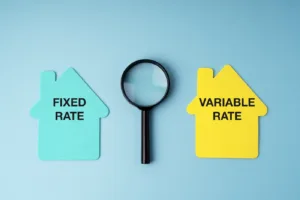Tim was excited about buying his first 50+ unit deal. He did all the due diligence right. He closed in record time, raised rents, fixed up the property and made it a cash machine.
Then Tim got an unsolicited offer he could not turn down. Signed the offer, and contacted his lender for a payoff. Then a most unwelcome surprise- Tim had a large pre-payment penalty of $100,000. Had he thought about his loan- Tim may have looked at that offer a little closer.
For commercial real estate investors, prepayment penalties represent one of the most significant yet often overlooked costs in loan financing. These fees can substantially impact your investment returns and exit strategies, making it crucial to understand the different types of penalties and how to navigate around them effectively.
What Are Prepayment Penalties?
Prepayment penalties are fees charged by lenders when borrowers pay off their loans before the scheduled maturity date.
- Unlike residential mortgages, where prepayment penalties are relatively rare and heavily regulated, commercial and multifamily loans almost universally include these provisions.
- Lenders impose these penalties to protect their expected interest income and compensate for the administrative costs and potential reinvestment risks associated with early loan payoffs.
Types of Prepayment Penalties
Understanding the various prepayment penalty structures is essential for making informed financing decisions and planning your investment strategy.
1. Step-Down Prepayment Penalties
Step-down penalties are the most common structure in commercial lending. These penalties decrease over time according to a predetermined schedule. A typical structure might be 5% in year one, 4% in year two, 3% in year three, 2% in year four, 1% in year five, and 0% thereafter. This structure encourages borrowers to hold the loan for its full term while providing some relief for those who need to exit earlier in the loan’s life.
2. Yield Maintenance Penalties
Yield maintenance is designed to make the lender “whole” by ensuring they receive the same return they would have earned if the loan had run to maturity. The penalty is calculated based on the present value of the remaining payments, discounted at the current Treasury rate plus a spread.
- When interest rates have fallen since loan origination, yield maintenance penalties can be substantial, sometimes reaching 10% or more of the outstanding loan balance.
3. Defeasance
Defeasance is often considered the most complex prepayment option. Rather than paying a penalty, borrowers substitute the real estate collateral with U.S. Treasury securities that will generate cash flows sufficient to service the remaining loan payments.
- While defeasance can sometimes be less expensive than yield maintenance, it requires significant administrative work and typically costs $50,000 to $100,000 in legal and consulting fees.
- Another prepayment method frequently interchanged with yield maintenance is known as “Make Whole.” Make whole amounts to the same penalty as yield maintenance but is derived from:
- Present Value of all future Principal & Interest payments including the balloon
- Less the outstanding principal balance.
4. Fixed Percentage Penalties
Some lenders use a flat percentage of the outstanding loan balance as a prepayment penalty, regardless of when the prepayment occurs. These penalties typically range from 1% to 5% of the loan balance and remain constant throughout the loan term until they expire, usually in the final year or two of the loan.
5. Lockout Periods
Lockout periods represent the most restrictive form of prepayment protection. During a lockout period, typically the first three to five years of the loan, prepayment is prohibited entirely, regardless of the borrower’s willingness to pay penalties. This structure is common in CMBS loans and provides lenders with absolute certainty about their cash flows during the lockout period.
Five Strategies to Avoid or Minimize Prepayment Penalties
1. Time Your Financing Strategically
The most effective way to avoid prepayment penalties is to align your loan terms with your investment timeline.
- If you anticipate selling or refinancing within five years, negotiate for shorter penalty periods or lower step-down rates.
- Consider bridge loans or other short-term financing options if you expect to exit quickly, even though these may carry higher interest rates initially.
2. Negotiate Penalty Exceptions and Carve-Outs
Work with your lender to include specific exceptions to prepayment penalties in your loan documents.
- Common carve-outs include partial prepayments up to a certain percentage annually (typically 10-20%), prepayments due to casualty or condemnation, and prepayments triggered by the sale of the property to a third party.
- Some lenders will also waive penalties if you’re refinancing with them, creating an opportunity for loyalty-based negotiations.
3. Consider Assumable Loans
Assumable loans can provide an exit strategy without triggering prepayment penalties. When structured properly, a qualified buyer can assume your existing loan, allowing you to transfer the debt obligation without prepaying.
- This strategy works particularly well in rising interest rate environments, where buyers are motivated to assume below-market rate debt.
- Many bank loans are reluctant to allow assumption wording in their loan documents. However, with a highly qualified buyer and a shorter term remaining on loan, some banks may choose to allow an assumption. Even if your documents say no- it is worth asking.
- Loans that are typically assumable with lender approval are Agency Fannie/Freddie Multifamily loans and CMBS (conduit loans). These loans are non-recourse and typically carry the steepest prepayment penalties, making the motivation for the buyer primary the interest rate.
4. Evaluate Penalty Costs Against Market Opportunities
Sometimes paying the prepayment penalty makes financial sense, particularly in rapidly appreciating markets or when interest rates have fallen significantly.
- In strong markets, the appreciation in property value may more than offset prepayment penalty costs.
- When you are placing a new loan, and expect rates to fall within the next few years, choose a shorter term with minimal pre-payment to allow for a future refinance at lower rates.
5. Find a Professional
Consider working with experienced commercial mortgage brokers who understand penalty structures and can help you negotiate more favorable terms. They often have relationships with lenders who offer more flexible prepayment provisions or are willing to customize terms for strong borrowers.
- Remember that the cheapest loan isn’t always the best loan. Sometimes paying a slightly higher interest rate for more flexible prepayment terms can save significant money if your plans change.
- Always model different scenarios and consider how prepayment penalties might affect your investment returns under various exit strategies before committing to any commercial loan structure.
Conclusion
Prepayment penalties are an unavoidable reality in commercial real estate lending, but they don’t have to derail your investment strategy. By understanding the different penalty structures, negotiating favorable terms upfront, and implementing strategic exit planning, you can minimize their impact on your returns.
Many investors we work with are looking to maximize their returns without unexpected headaches. Contact us for valuable insight into growing your returns and minimizing unexpected expenses.





